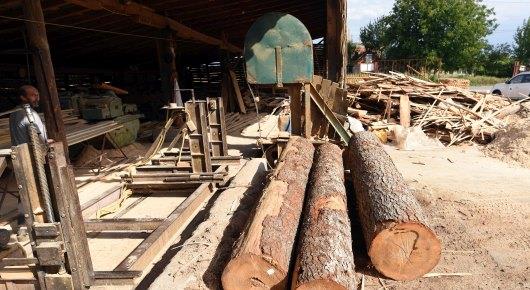Wood energy is no sleeping giant, say UNECE/FAO experts

If we try to picture how humanity can make “affordable, reliable, sustainable and modern energy” available to everyone by 2030, as stated in Sustainable Development Goal 7, a few things come to mind: solar panels, wind turbines, geothermal plants, heat pumps, tidal power plants and more.
But what about solid biofuels or, more specifically, wood energy? Wood energy is one often-overlooked renewable energy giant, say experts from FAO and the United Nations Economic Commission for Europe, and the giant is not sleeping.
In many developing countries, wood energy provides the majority of total energy supply and, even in several developed countries, wood energy provides nearly 25 percent of the total energy supply. Wood energy continues to be the leading renewable energy source in Europe, accounting for about 45 percent of primary energy from renewable sources.
A new study published by FAO and UNECE highlights the state of wood energy throughout Europe, the Commonwealth of Independent States and North America.
Wood energy is modern and growing fast. Wood pellets, made from compressed wood particles, are changing the way wood is used for heat and power generation by virtue of their efficient combustion, convenience and the fact that they are more energy dense than traditional firewood. The manufacture of wood pellets and their distribution supports employment in the forest sector, often in rural areas where job opportunities are needed. This development has also provided market options for what had been low-value residual wood products, such as sawdust, post-consumer wood, and wood from harvest sites, which had often been seen as not having value and thus left in the forest or burned in the harvest area.
These findings and more appear in the study “Wood Energy in the ECE Region: Data, Trends and Outlook in Europe, the Commonwealth of Independent States and North America,” which was developed by the Joint UNECE/FAO Forestry and Timber Section with the support of the Government of Finland and the ECE/FAO team of Specialists on Wood Energy.
The study sheds light on the current situation of wood energy, types of wood fuels used, major sources and users, public policy instruments that support (and hinder) its use, and how to sustainably source wood. Moreover, it provides an outlook on how current social, economic and political trends and developments may mould the use of wood for energy and its sustainable production.
Policy measures to increase the share of renewable energy and decrease carbon emissions have played a strong role in the increased use of wood for energy and, together with the rapidly increasing oil prices at the beginning of this millennium, have contributed to jumpstart a wider use of wood energy, particularly in Europe. Within the portfolio of renewable energy sources, wood energy has some clear advantages. It does not have the limitations of other renewable energy sources, as it is storable and will continue to provide energy even when there is no sun or wind, or when hydroelectricity generation potential is limited.
The study also notes that the use of wood for energy, if not done properly, can have negative ramifications. If used inefficiently, wood energy can be a significant source of indoor and outdoor pollution. The harvest of wood fuels can degrade forests if sustainable practices are not observed.
Nonetheless, wood energy can be a very clean and sustainable fuel if best practices are applied to sourcing, processing and combustion efficiency. The use of improved stoves and fuels, for example, can reduce fine particle emissions from traditional open fireplaces by more than 95 percent.
The publication is available in English on the UNECE website.
24 May 2018, Geneva, Switzerland
